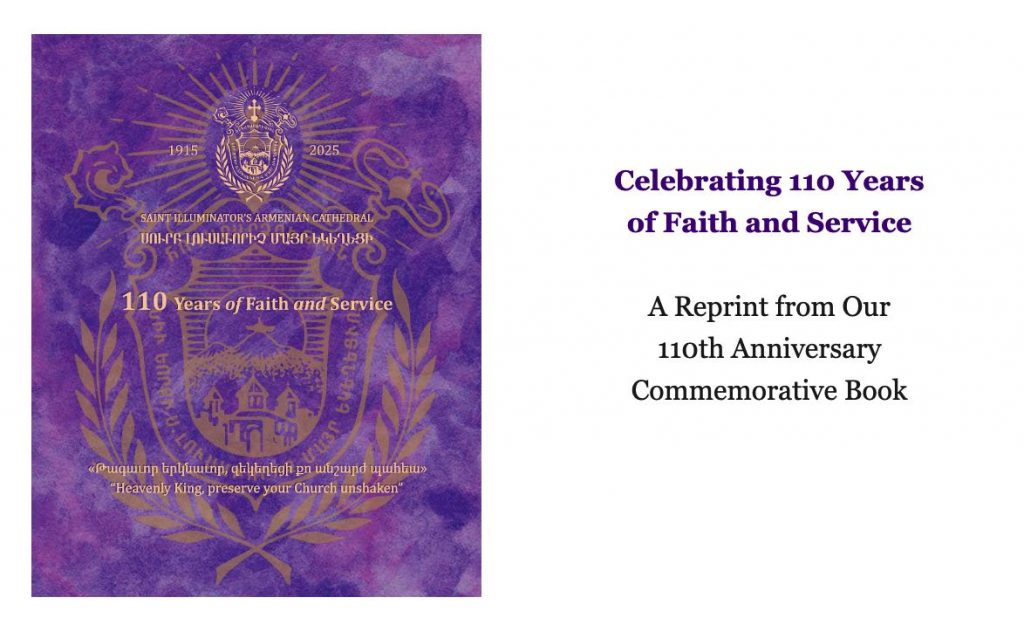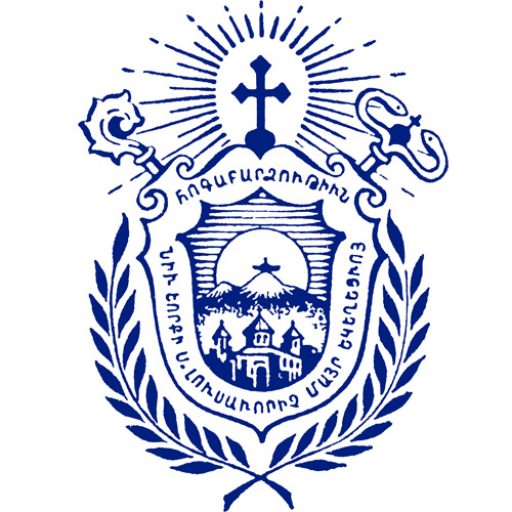
Labor of Love:
Mayr Yegeghetsi’s Noble and Most Romantic Service
By Armen Morian
Next to Armenian Christian formation and Armenian education, the most important role the Armenian Church in America has played is that of wholesome intermediary for young Armenian couples to meet, marry, and start new families. Every church may be said to serve the role of creating new families by performing the sacrament of marriage. But the lengths to which Mayr Yegeghetsi went following the Genocide is truly the stuff of romantic legend and worthy of the most affectionate retelling.
One of the most remarkable vignettes in the storied history of Mayr Yegeghetsi was an undertaking by the Cathedral in its earliest years to make matches between young Armenian women who were living in the orphanages and homes of Lebanon and Syria and young Armenian men who had emigrated to the United States, many before the Genocide, to work in the factories and mills of the industrial Northeast and Midwest.
The men in America were invited to send photos of themselves looking their best. Mayr Yegeghetsi arranged for the photos to be delivered to the Forty Martyrs Armenian Church in Aleppo, Syria, where the young women from the orphanages and homes were invited to come, to view and choose from among them a potential husband. When the women had made a choice, Mayr Yegeghetsi facilitated a correspondence between the potential couples. If the correspondence flourished and a relationship blossomed, and the couples were inclined, arrangements were made to travel under sponsorship to New York, the brides-to-be sailing from the Near East and the grooms-to-be coming by train from the Northeast and Midwest.

Mary Dugan’s parents, Misag and Zevart Megrdichian, of blessed memory, on their wedding day at Mayr Yegeghetsi, in 1921.
Hampartsoom Hamparian and Armaveni Kazarian, of blessed memory, from Sepastia, married at Mayr Yegeghetsi in the 1920s.

Here in New York, the couples met at Mayr Yegeghetsi where under her chaperoneship they were provided an opportunity for a few days to test the chemistry of their potential match in person, while being squired around the city to see the magnificent sights of Jazz Age New York. After a few days, the couples faced a choice: to marry or not to marry. Those who chose not to marry returned home. Those who had found their mate were wed at Mayr Yegeghetsi on Sunday. On Monday, the new brides would accompany their new husbands back to the American cities the young men had come from, where they embarked on their new lives as married couples, to make for themselves and all of us a new Armenia in their new homes in America.
To facilitate this matchmaking on scale, Mayr Yegeghetsi maintained a wardrobe of wedding dresses, the same one in different sizes, with which the brides were outfitted for their weddings, and had a photographer on hand to capture the moments.

The wedding of Onnik and Araksi Dinkjian, officiated by Rev. Fr. Arsen Simoniantz, in 1954.

The wedding of Peter and Terry Jelalian, of blessed memory, officiated by Rev. Fr. Arsen Simoniantz, in 1949.
We do not know how many such weddings there were, but we do know a beautiful child of one of those weddings. She is our very own, beloved super-parishioner Mary Dugan, 101 years old, who has come to church, on her own, every Sunday, for six decades, and who for many of those decades has been the doyenne of the young who come to Mayr Yegeghetsi and surround her with their Fellowship.
Other introductions and acts of matchmaking at Mayr Yegeghetsi were more immediate, such as the one that resulted in the wedding in the 1920s of Hampartsoom Hamparian of Sepastia, to Armaveni Kazarian of Sepastia, at St. Illuminator’s. They were introduced to each other and married by Rev. Azaria Boyajian.
 The wedding of Avedis and Rosemary Alashaian, Avedis of blessed memory, officiated by Rev. Fr. Arsen Simoniantz, in 1957. Note the Altar icon, which was a substitute for Fetfejian’s Madonna and Child, away at the time for conservation.
The wedding of Avedis and Rosemary Alashaian, Avedis of blessed memory, officiated by Rev. Fr. Arsen Simoniantz, in 1957. Note the Altar icon, which was a substitute for Fetfejian’s Madonna and Child, away at the time for conservation.
But Mayr Yegeghetsi is also known for creating other wholesome opportunities, too, for young Armenians to meet: the many socials, hops, and dances she sponsored for more than a century. While these did not have the same dramatic character as her epic post-Genocide matchmaking, they were no less important, creating occasions for countless Armenian couples to meet and eventually marry, including one such couple who met at a dance sponsored by Mayr Yegeghetsi at the Audubon Ballroom in Washington Heights in September of 1960. That couple were my beloved parents, Vazgen and Arpi Muradian, of blessed memory.
“What therefore God hath joined together, let not man put asunder”
— Matthew 19:6


The wedding of then-Deacon Krikor and soon-to-be Yeretsgeen Ojeen Lakissian, presided and officiated by Archbishop Oshagan Choloyan, joined by Archbishop Zareh Aznavourian, of blessed memory, then-Very Rev. Fr. now Archbishop Anoushavan Tanielian, Very Rev. Fr. Navasart Mardoyan, and Rev. Fr. Moushegh Der Kaloustian, of blessed memory, December 23, 2000.
On the Altar: Hayr Anoushavan, Oshagan Srpazan, Hayr Navasart, Der Moushegh, and Deacon Shant Kazanjian. Holding the cross as Gnkahayr or Best Man is Der Mesrob’s brother, Harout Lakissian, who now serves as Mukhtar of Anjar.
And of course, Mayr Yegeghetsi has also provided opportunities for couples to meet in the most whole-some of ways while serving the Church. One such extra-special couple are our very own pastor, Der Mesrob and our Yeretsgeen Ojeen, who met right here at Mayr Yegeghetsi when Der Mesrob served on her Altar as a deacon and Yeretsgeen sang in her Choir.
No chronicle of Mayr Yegeghetsi or understanding of her importance could be complete without recognizing and venerating the signal role she played since her founding in midwifing the creation of new Armenian families and new Armenians. The romantic narrative arc of Mayr Yegeghetsi‘s post-Genocide matchmaking exemplifies her special role in the life of Armenians in America and the rebirth and renewal of the Armenian nation.
